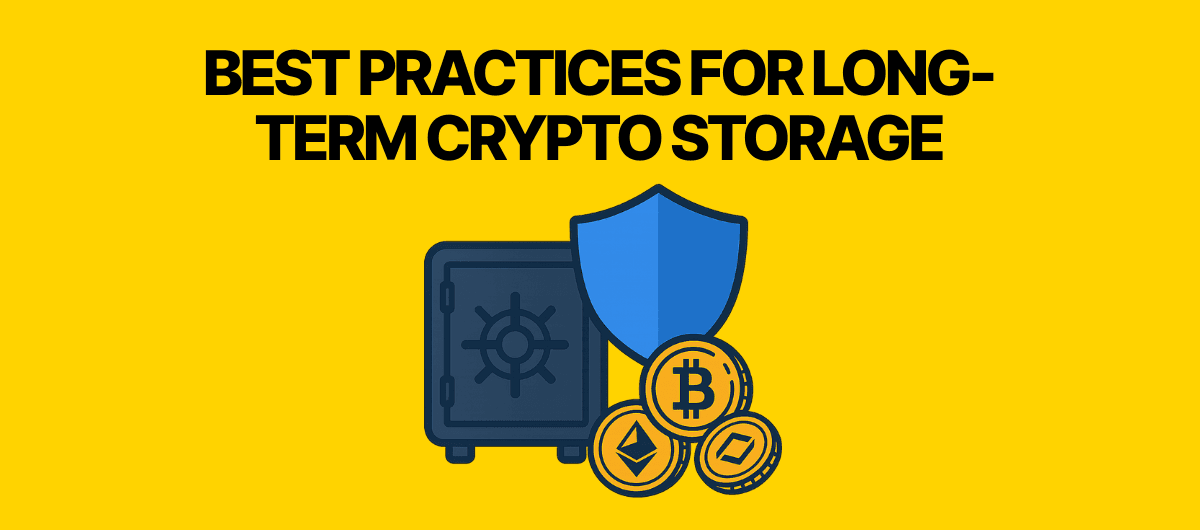Hot Wallets vs Cold Wallets: Which to Use? (2025 Guide)
Learn the key differences between hot and cold crypto wallets in 2025. Which wallet type is safer, easier, and better for your crypto needs?

Hey, it’s Lanzo 👋
One of the most common beginner questions in crypto is:
👉 “Should I keep my coins in a hot wallet or cold wallet?”
This decision matters more than most people think.
Because wallets aren’t just “apps” — they’re the gatekeepers of your money.
In this guide, we’ll cover:
- Hot Wallets Explained 🔥
- Cold Wallets Explained ❄️
- Hot vs Cold: Key Differences
- Pros & Cons of Each
- Which Wallet Should You Use?
- Common Beginner Mistakes
- Real-Life Examples
- Best Hot & Cold Wallets in 2025
- TL;DR
- FAQ
Hot Wallets Explained 🔥
A hot wallet is any crypto wallet connected to the internet.
Examples: MetaMask, Trust Wallet, Exodus, exchange wallets like Bybit or Binance.
Related: How to Create a Bybit Account
✅ Benefits:
- Instant transactions
- Easy to use on mobile or browser
- Free to download
⚠️ Risks:
- Internet = hackable
- If your device gets malware → your wallet is exposed
- Safer only for small amounts or active trading
⚡ Lanzo Tip: Think of hot wallets like your daily-use wallet in your pocket. Good for coffee money, not your life savings.
Cold Wallets Explained ❄️
A cold wallet is offline storage.
Usually a hardware device (Ledger Nano X, Trezor) or even a paper wallet.
Related: How to Protect Your Recovery Phrase
✅ Benefits:
- No internet connection → safe from hacks
- Best for long-term storage
- Protects large amounts of crypto
⚠️ Risks:
- Costs money (€70–€150 for hardware)
- Less convenient for quick trades
- If you lose your recovery phrase → funds gone
Hot vs Cold: Key Differences ⚖️
| Feature | Hot Wallets | Cold Wallets |
|---|---|---|
| Internet connection | Always online | Offline |
| Security | Medium | Very high |
| Convenience | Instant access | Requires device |
| Cost | Free | €70–€150 |
| Best for | Daily use, small funds | Long-term, large funds |
👉 Quick rule:
- Active trader? Use a hot wallet for speed.
- Long-term holder? Use a cold wallet for security.
Pros & Cons of Each ✅⚠️
Hot Wallets
Pros:
- Free, fast, simple to set up
- Great for small amounts
- Easy to connect with DeFi dApps
Cons:
- Hackable (phishing, malware, SIM swaps)
- If exchange is hacked, funds at risk
- You don’t always control the keys
Cold Wallets
Pros:
- Safest way to store large funds
- You hold the keys → you own the coins
- Immune to online attacks
Cons:
- Costs money upfront
- Less convenient for frequent trades
- If you lose device + backup → coins gone
Which Wallet Should You Use? 🎯
You don’t have to choose only one.
Smart crypto users use both:
- Hot wallet → for small, active balances
- Cold wallet → for savings and long-term holds
Example:
- €200 in hot wallet for quick DeFi trades
- €20,000 in cold wallet for long-term Bitcoin hold
Common Beginner Mistakes ❌
- Keeping everything on exchanges.
- Forgetting to back up seed phrase.
- Storing backup phrase on cloud storage.
- Buying hardware wallets from Amazon instead of official site.
- Believing “I’ll never get hacked.”
⚠️ Lanzo Warning: If you keep everything in a hot wallet, it’s not if you get hacked — it’s when.
Real-Life Examples 📖
- Case 1: Mt. Gox (2014) → 850,000 BTC lost because users trusted exchange wallets.
- Case 2: Ledger Hack (2020, customer data leak) → reminder to store recovery safely.
- Case 3: FTX (2022) → billions frozen because people left funds in “hot” exchange accounts.
Moral of the story?
👉 Cold wallets win for savings. Hot wallets are fine for pocket change.
Want to secure you’re savings, use cold wallet like ledger nono x? How to Set Up Your Ledger Nano X.
Best Hot & Cold Wallets in 2025 🏆
Hot Wallets
- MetaMask → Best for DeFi & Ethereum users.
- Trust Wallet → Multi-chain, beginner friendly.
- Exodus → Clean UI, supports many coins.
Cold Wallets
- Ledger Nano X → Industry standard, Bluetooth + app.
- Ledger Nano S Plus → Budget option.
- Trezor Model T → Touchscreen, open-source.
TL;DR 📌
- Hot wallets = online, convenient, but hackable.
- Cold wallets = offline, safest for long-term.
- Smart traders use both: hot for small, cold for big.
- Never store everything on exchanges.
- Always back up your recovery phrase safely.
FAQ
Cold wallets. Always. Hot wallets are for convenience, cold wallets are for security.
Start Securing Your Crypto Today 🔒
Ledger Nano X
Secure your Bitcoin, Ethereum, and altcoins with the most trusted hardware wallet.
This is an affiliate link. If you buy, Lanzo may earn a commission at no extra cost to you.
Start Trading Safely
Get Bitcoin, Ethereum, and stablecoins with Bybit — beginner friendly and low fees.
This is an affiliate link. If you buy, Lanzo may earn a commission at no extra cost to you.
⚡ Lanzo Tip: Don’t think of hot vs cold as “either/or”. Use both, and you’ll cover convenience and safety.
(This post contains affiliate links — supporting Lanzo at no extra cost to you.)
You might also like
Not financial advice. Based on public sources. As of today.


